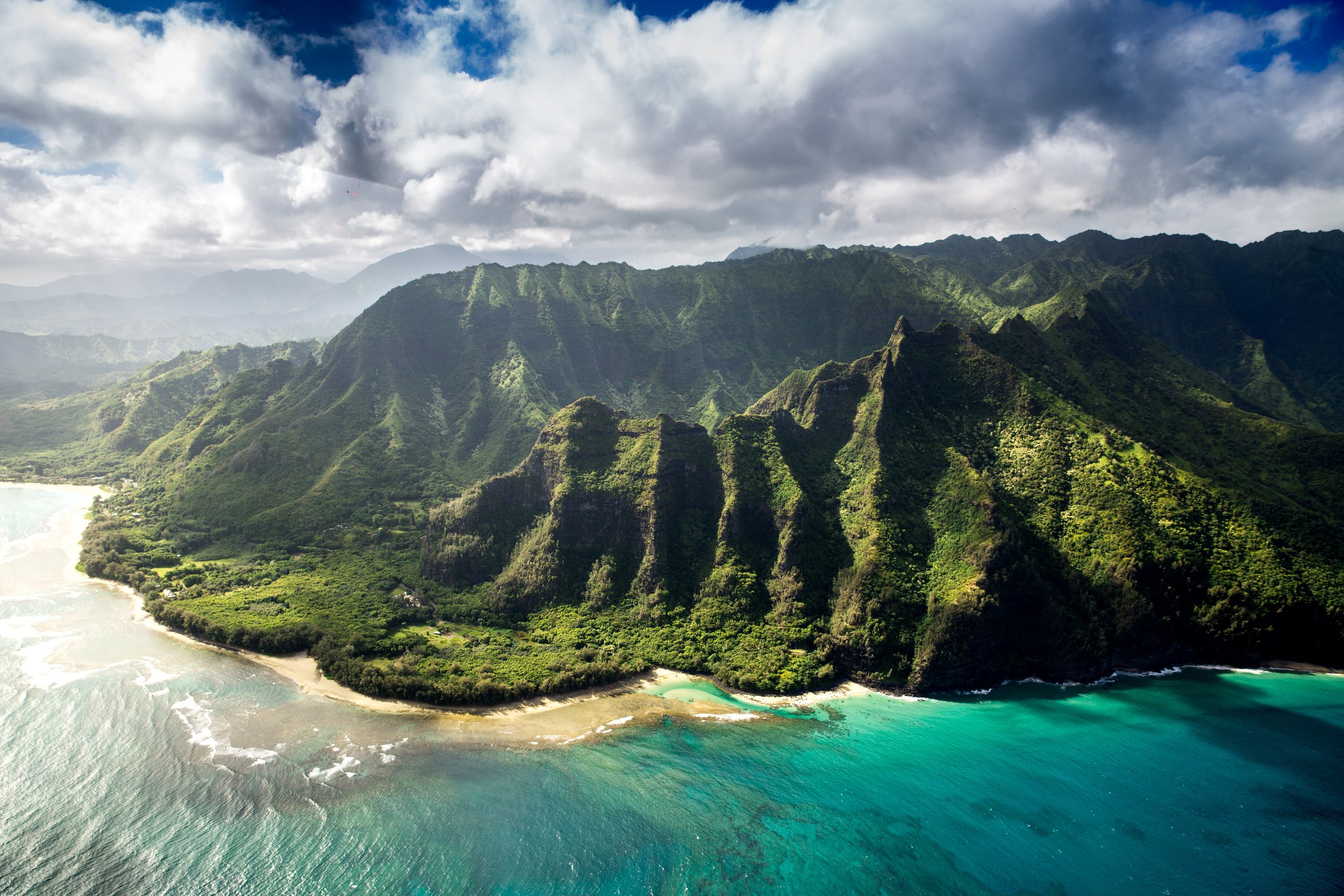
Hawaii
Hawaii is the only state to use its own language, though English is still predominantly used. Most place names are in Hawaiian, so you can spot it on street signs, and other road markers.
Hawaiian is a vowel-oriented language that only uses eight consonants: H, K, L, M, N, P, W, and (ʻ), called an ʻOkina.
Every Hawaiian word ends in one of 5 vowels: A, E, I, O, or U.
Each vowel can also have a macron over it: Ā, Ē, Ī, Ō, and Ū.
These vowels are often combined to make Diphthongs. I.e. UI, AI, AE, etc...
Hawaii is known for its lush and tropical vegetation, with a variety of plants and trees. However, being a volcanic island chain, Hawaii has a wide range of landscapes, and as such vegetation as well.
You will often see plenty of ferns, tall grass, or other flowers on the sides of the roads.
Hawaii uses highway shields that resemble a guitar pick, with the numbers on the bottom of the shield. Most highway signs also use yellow signposts.
The Island of Kauai is the furthest west island in Hawaii with official Google coverage. This island has deep red soil and has large rugged hills with lush, jungle-like vegetation. This island also has exclusively Generation 3 coverage.
NOTE: Other islands such as Maui and Molokaʻi have similar soil colours, but the hillsides on them will typically have less dense vegetation.
The Island of Molokaʻi is just southeast of the Island of Oʻahu. This island features deep red soil, dry-looking vegetation, and a prominent volcano on the eastern end of the island. Molokaʻi is also very sparsely populated. This island only has Generation 3 coverage.
The Island of Lānaʻi is a small, yet distinct island that lies just south of Moloka’i. A volcano is found just east of the centre of the island, adjacent to the town of Lānaʻi. In this area, tall Cook pines are abundant. In addition, some main roads near the centre of the island are lined with younger Cook pines. The island only has Generation 3 coverage.
Coastal areas of Maui are noticeably more lush and green. Banana plants, palm trees, and views of the mountains are all common.
The Island of Hawai’i (also referred to as The Big Island) is both the largest and farthest southeast island with Street View coverage in the state. The interior areas feature rolling, grassy plains and volcanic rocks. You can typically see one or more of the island’s volcanoes from the road. Both Generation 3 and Generation 4 coverage are common in this area.
The coastal areas of the island of Hawai’i are where most of the towns and built-up areas on the island are located. These areas are typically more lush and have more trees and fern plants than the interior. Generation 4 coverage is very common in these areas, but Generation 3 coverage can still be seen.
Rural roads going through forests within a flat landscape are commonly found south of the city of Hilo, on the island of Hawaiʻi.
NOTE: Mountainous forests are dotted around Hawaii, but if you are in one, and you see red soil with Generation 3, consider guessing in Kauai, the westernmost covered island.
The town of Kaunakakai is the largest settlement on the Island of Molokaʻi. It is the only area on the island with an ‘urban’ vibe. As it is on Molokaʻi, the town has generation 3 coverage and the soil is red.
On the eastern side of the island of Molokaʻi lies the Kamakou volcano, leading to a significantly hillier and slightly more vegetated landscape than the western parts of the island.





























